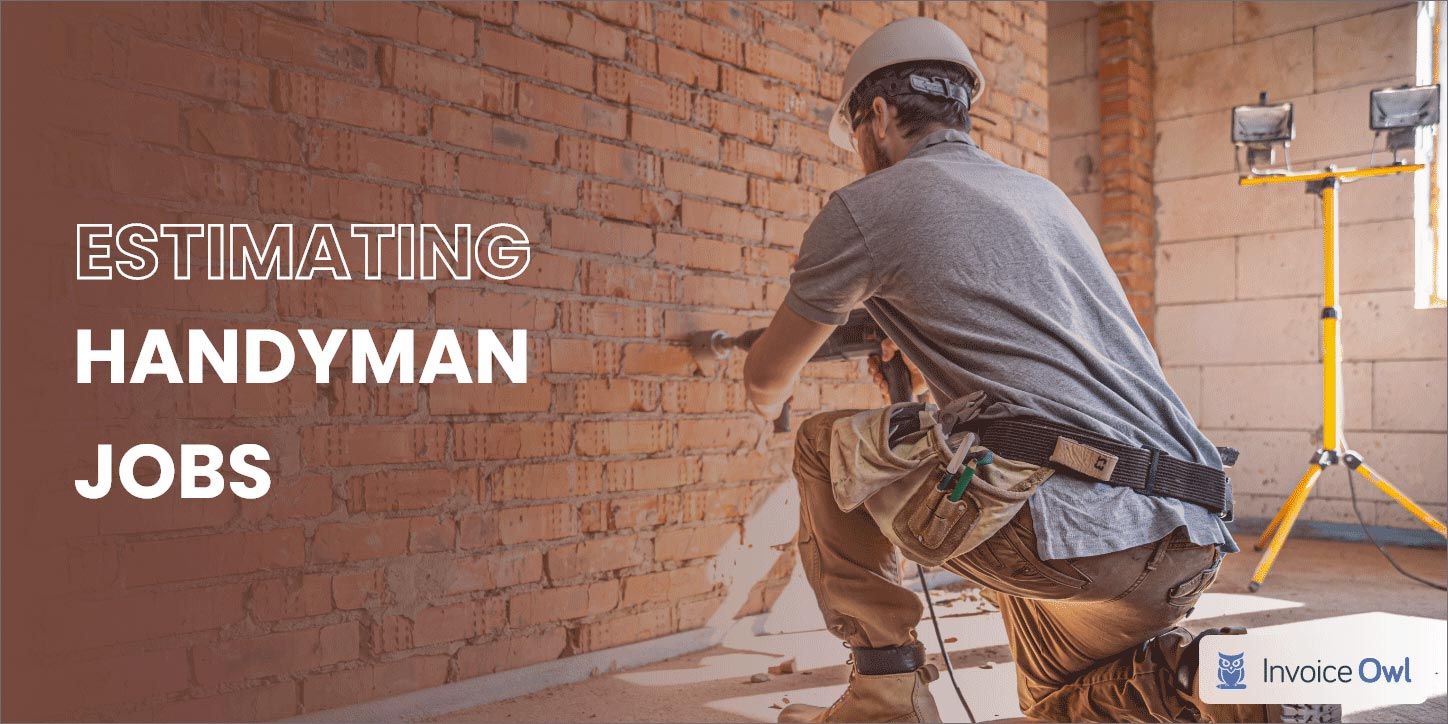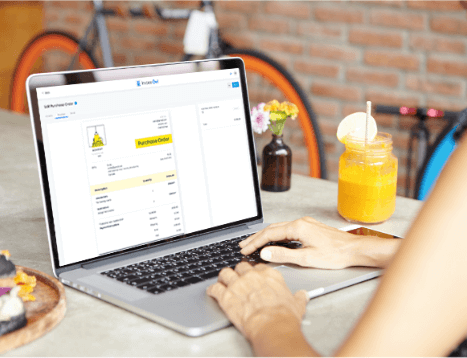There are currently over 91,120 handyman services employed in the United States, according to a Zippia report. With handyman services in high demand in most states, self-employed handyman hourly rates range from $40 per hour for low-end services to around $50 – 80 per hour for more skilled hands.
📝Key Takeaways:
- Handyman rates are higher in states with a higher cost of living.
- Handyman estimates typically include material costs, labor costs, travel expenses, cost of special equipment, and subcontractor fees.
- You get better at estimating with practice.
- Negotiating your prices does more harm than good to your brand image.
Whether you’re running a handyman business or just starting out as a self-employed handyman, pricing your handyman services rightly is critical for success. Your pricing influences your profit margin, how rapidly you can scale the business, and how well you compete in the industry. So deciding on a fair price will help your handyman business thrive.
Handyman rates are indicative of skill and experience, so when your rates are really low, people might get the wrong impression of your services or skill set. Higher handyman rates, on the other hand, can deter potential customers from doing business with you.
Here’s a comprehensive guide on how to price your handyman services fairly and profitably. You’ll also learn when a flat fee is more appropriate as well as considerations for setting your self-employed handyman hourly rate.
Table of Content
Advantages of Fixed Rates
Most handymen charge a flat rate for small jobs with shorter timelines, and for good reason. It wouldn’t make sense to charge $50 per hour for a job that would take you barely 30 minutes. You should only bill clients per hour for jobs spanning several days.
Regardless, you are better off charging a flat rate if your hourly rate on a given project would potentially sound unreasonable to anyone and most likely above the competitive market rate. In these cases, clients would gladly opt for a flat rate. Just ensure your quote covers the amount of work required, as well as other costs like travel and overhead, to ensure you run a profit.
Get a detailed understanding on flat rate vs. hourly rate. Going through this comparison guide, you will understand which suits you best, in what situation.
Tips on Estimating Handyman Jobs
1. Establish your personal and business expenses
As a self-employed handyman, it’s critical to identify your personal and professional expenses. Personal expenses include mortgages, loans, rent, utility bills, automobile payments, etc. Tracking your monthly living expenses gives you an idea of how much you spend as compared to what you make on a monthly basis.

- personal expenses
- professional expenses
Professional or business expenses include the cost of basic tools, rental of power tools, transportation, business cell phone, business cards, client management, invoicing, and estimating software. Most handymen save costs by using an all-in-one solution for sending out invoices, managing clients, and tracking business expenses.
With the knowledge of your personal and business expenses, you can set rates that generate enough revenue to pay for all your business and living expenses. Staying on top of your personal and business finances would help you run your handyman business effectively.
2. Determine the project’s duration
You should be mindful of how long it takes other handymen, on average, to complete the services you offer and their hourly rate. You should also be aware of how long it takes you to complete the same handyman service to determine if your hourly rate is competitive. You can also compare your rates to the national average rate, as well as the state and city’s average, to give yourself an advantage.
Handyman hourly rates range from $40 to $80 per hour, depending on the skill and experience required. A highly skilled handyman earns as high as $130 per hour, but this depends on a number of other factors, like whether the handyman is insured or services remote areas.
Here are the national average durations for handyman jobs that should take a few hours to complete:
| 1-2 hours | 2-3 hours | 3-4 hours | 4+ hours |
| Replacing thermostat | Toilet installation | Replacing windows | Repairing a wall |
| Installing a ceiling fan | Drywall repair | Hanging a door | Installing heating and air conditioners |
| Replace wiring | Based on the initial project design | Woodwork repair | Electrical wiring |
| Repairing leaky faucets | Laying carpet |
3. Determine the handyman services required
Handyman jobs cover a wide range of fixing and repair services like plumbing, repairing damaged gutters, drywall installation, patching and painting, fixture replacement, laying tiles, and deck construction and repair. A knowledgeable and experienced handyman would be highly sought after and would be well-versed with a list of handyman skills. The higher the skills the better he gets paid off.
When speaking to a potential client, ensure you have a clear picture of the requirements and understand the project scope before taking it up. It is critical for your credibility and long-term success not to accept a job you are not qualified, licensed, or experienced to perform.
Once you’ve fully understood the project requirements, you’d have to accurately estimate the total cost of the project, which includes your handyman rates, and other expenses like labor costs, equipment costs, and material costs.
4. Consider hidden expenses
Another important thing to note when setting a flat fee for your handyman service is that hidden costs could take a chunk of your profits. Licensed contractors have to renew their handyman licenses every two years. Also, if you accept payments online, you’ll probably be charged a percentage of the total cost as a processing fee. These costs eventually add up and affect the bottom line.
Ensure you include these costs in your estimated profit margin and overhead when creating and sending out estimates. A robust estimate software for handyman businesses will take these data into account, enabling you to rest assured knowing that these hidden costs are covered.
It’s also generally a good idea to set your profit margin at 35% to give some room for flexibility when the unexpected happens. Here are other costs that should determine your handyman prices:
- Monthly living expenses
- Vehicle mileage and maintenance
- Tools
- Health and liability insurance
- Advertising
- Office supplies
- Website costs
- Licensing fees
- Phone and internet
- Taxes: self-employment, state income tax, federal income tax
5. Refer to previous estimates
One way to save time and energy when drafting estimates for small jobs is to evaluate estimates for similar past projects. This will assist you in quickly determining the material costs, labor costs, and all other associated expenses. This can also help you determine whether it’s worthwhile to take on the task based on whether previous projects were profitable.
The most important thing to note when referring to previous jobs is to ensure you’re comparing projects of a similar size and scope. Also, ensure that you verify material costs as they tend to fluctuate.
Estimating has never been easier!
Create estimates anytime and anywhere with InvoiceOwl. Get payments faster and securely.
Start Your FREE Trial
6. Know the competition’s rate
It’s vital to know how much your competitors charge for the same services in your area. Find out the average hourly rate and the flat rate of your key competitors to determine whether you can offer a pricing advantage.

Asides from doing a google search for handyman prices in your area, you can do your research on any of the following websites:
- Home Advisor
- Facebook Jobs and Marketplace
- Angie’s List
- TaskRabbit
- Thumbtack
You should strive to set your own handyman prices such that they fall somewhere in between. You should assume that potential clients would search online for competitive prices, so if your prices are on the high side, you may end up losing clients.
7. Don’t offer discounts
You may believe offering discounts is a fantastic strategy to beat the competition. However, offering discounts makes you appear incompetent and unprofessional, which would certainly harm the cash flow and longevity of your business.
On the other hand, occasionally increasing your handyman prices, especially during peak periods, can turn out to be very profitable. If a prospective customer insists on a discount, politely tell them that your rates are competitive and you’d look into the possibility of getting a discount for bulk orders on material costs. Another option is that they change the scope of the project to accommodate their budget.
The most important thing to remember when negotiating a deal is to be courteous yet firm. Being consistent and providing outstanding customer service would most certainly result in more satisfied customers than offering cheap services.
Typical Handyman Rates
Handyman prices are generally influenced by the cost of living in the state, which is why their rates are higher in cities like New York and California, where the living expenses are much higher. Also, a self-employed handyman’s hourly rate is usually 15-20% less than their corporate counterparts. That said, here’s a list of the average hourly rate for handymen across the country:
- Low-end handyman: $40 per hour
- Self-employed handyman: $40 – $80 per hour
- Corporate handyman: $75 – 125 per hour
- High-end handyman: $130 per hour
- National average: $60 per hour
What is the hourly rate for a handyman?
The national average hourly rate for a self-employed handyman in the United States is $60. While these rates vary by skill, experience, and insurance coverage, corporate handymen earn around $125 per hour on average.
How much should I price my handyman service as a newbie?
$150 – $400 as a flat rate for an average job you expect to complete in a couple of hours. Handyman prices vary by the project’s scope as well as the experience or skill required. The most important thing to note while starting out as a handyman is to avoid taking up projects that you’re not qualified for. As a skilled handyman, you’ll most likely rely on repeat customers and referrals, so being honest is critical to your long-term success.
What should be included in a handyman’s estimate?
Your estimated price for a handyman job will also be determined by the nature of the work and its complexity. Once you’ve fully understood the scope of the project and decided on whether a flat rate or hourly rate is appropriate, ensure your estimate itemizes all expenses the client would incur, including material costs, labor costs, travel expenses, cost of special equipment, and subcontractor fees.
Pitch Your Prices in Minutes
Win more jobs with professional estimates you can customize on the go.
Start Your FREE Trial
What Estimating Software Do Handymen Use?
With lots of options to choose from, many self-employed handymen and small businesses rely on the speed and accuracy of InvoiceOwl to prepare and send estimates and invoices to clients. InvoiceOwl is an online estimating software designed for contractors and small businesses and has lots of free and easily customizable professional templates you can use to send your estimates in a matter of minutes.
Would you like to learn how to create accurate estimates on the go?
Try InvoiceOwl FREE. No credit card required, cancel anytime.
 By
By 

